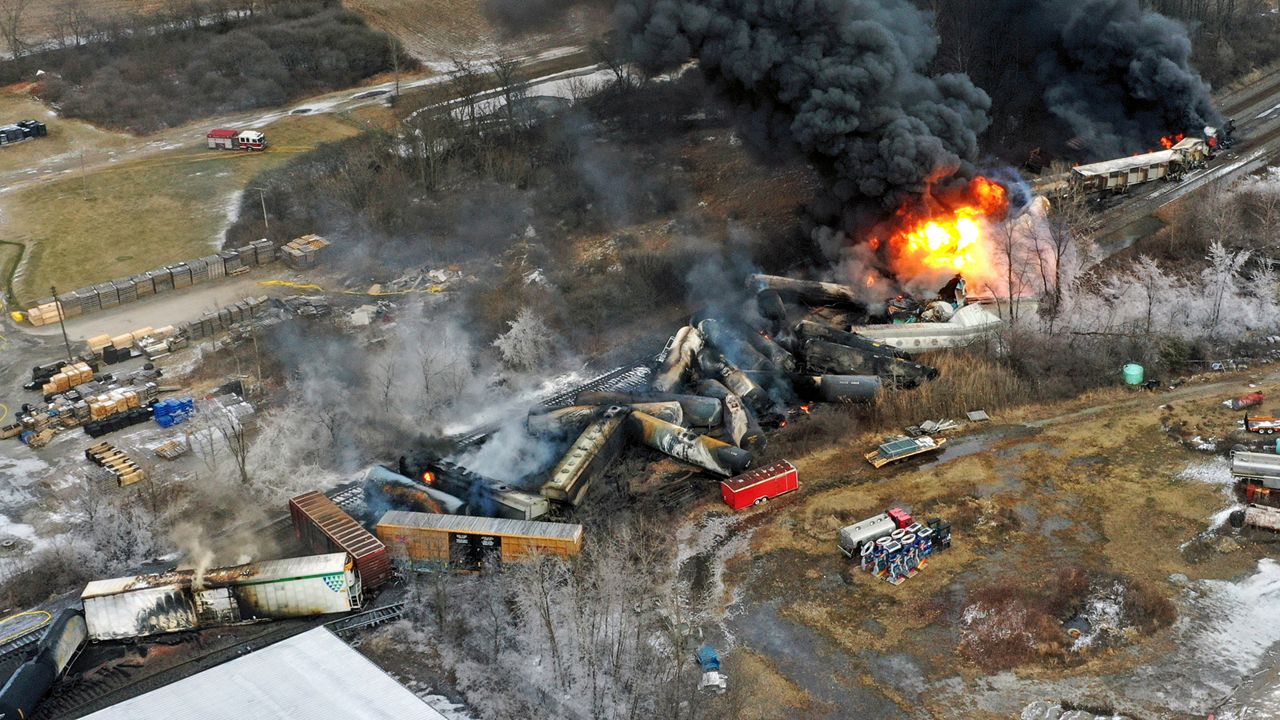A preliminary report from the National Transportation and Safety Board released Thursday shows that the crew that operated the Norfolk Southern train that derailed in East Palestine, Ohio, received a warning about an overheated axle and attempted to stop it before the incident.
The Norfolk Southern train, which was carrying hazardous materials on the Norfolk Southern Railway (NS), derailed on Feb. 3 at approximately 8:54 p.m. The NTSB report states 38 of 149 railcars derailed from the main track.
Before the derailment, the train had went through three wayside defect detectors, or hot bearing detectors (HBD), which help assess temperature conditions of wheel bearings as a train continues down its route. If the HBDs record a temperature that's above threshold, they transmit an alarm message asking the crew to stop and inspect the hot axle.
The NS has established the following HBD alarm thresholds (above ambient temperature) and criteria for bearings:
- When it's between 170 degrees to 200 degrees, it's deemed non-critical and the crew should stop and inspect.
- If there's a difference between bearings on the same axle greater than or equal to 115°F (non-critical); stop and inspect
- If it's greater than 200 degrees, it's critical and the rail car should be set out.
The report states at milepost 79.9, the HBD alarmed the crew about the suspect bearing from the 23rd car, which had a temperature 38 degrees above ambient temperature. At MP 69.01, the bearing's temperature increases to 103 degrees above ambient. Then, at MP 49.81, the bearing had been 253 degrees above ambient.
The crew had slowed down and brought the train to a stop, according to the report. The crew then observed smoke and fire, then notified the Cleveland East dispatcher of a possible derailment.
The report states the crew then "applied handbrakes to the two railcars at the head of the train, uncoupled the head-end locomotives, and moved the locomotives about 1 mile from the uncoupled railcars."
NTSB investigators inspected equipment, as well as track conditons. They reviewed the detectors, the signal system and surveillance cameras. NTSB said video from a local residence appears to show that a wheel bearing had been in its final state of overheat failure, which has been collected as evidence to be examined.
Responders had mitigated the fire by Feb. 5, but were concerned about five derailed cars that had been carrying 1115,580 gallons of vinyl chloride, and one rail car's temperature was still rising, according to the report. Officials said the rise in temperature could lead to an explosion, which led to evacuations near the derailment.
On Feb. 6, officials decided to do a controlled release of the toxic chemicals.
The NTSB said the investigation is ongoing.



